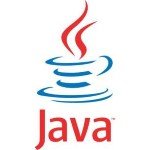Spring Data
-
Enterprise Java

Spring Data DynamicInsert Annotation Example
1. Introduction Spring Data JPA supports common JPA providers, e.g. Hibernate, EclipseLink, etc. Hibernate pre-generates and caches static SQL insert…
Read More » -
Enterprise Java

Implementing an Elasticsearch Aggregation Query in Java
Elasticsearch is a distributed search engine that is designed for scalability, flexibility, and high performance. It allows us to store,…
Read More » -
Enterprise Java

Finding the Max Value in Spring Data JPA
When working with Spring Data JPA, retrieving specific values from a database is a common requirement. One such requirement is…
Read More » -
Enterprise Java

Using Enum in Spring Data JPA Queries
When constructing our persistence layer using Spring Data JPA, we frequently deal with entities that contain enum fields. These enum…
Read More » -
Enterprise Java

Spring JPA LIKE Query Example With JdbcTemplate or JpaRepository
LIKE queries in SQL allow users to search for specified patterns in the database table columns, enabling flexible and dynamic…
Read More » -
Enterprise Java

Querydsl vs. JPA Criteria
Querydsl and JPA Criteria are widely used frameworks for creating type-safe queries in Java. Both offer methods to express queries…
Read More » -
Enterprise Java

Refresh and Fetch an Entity After Save in Spring Data JPA
The Java Persistence API (JPA) serves as a connector linking Java objects and relational databases, facilitating the smooth persistence and…
Read More » -
Core Java

Test Repository with @DataJpaTest and JUnit
1. Introduction In today’s software development landscape, ensuring the reliability and correctness of applications is paramount. Testing plays a crucial…
Read More » -
Enterprise Java

Java Application with Neo4j: How to use Spring custom queries and projections
We previously built a Java application on a Neo4j graph database. Now we can take this further by exploring custom…
Read More »






